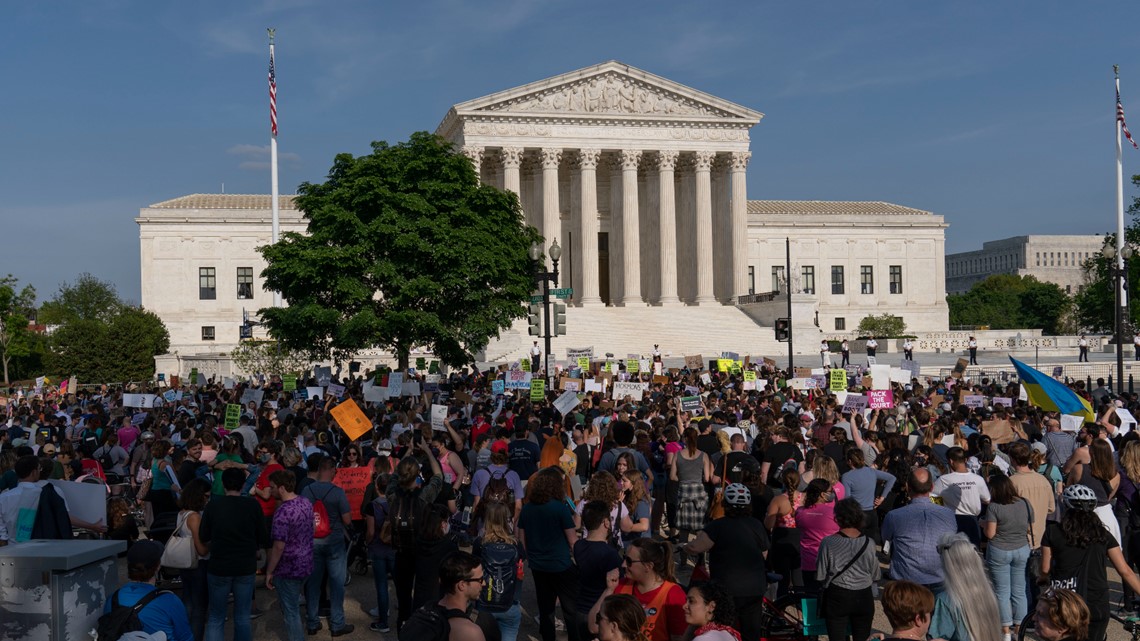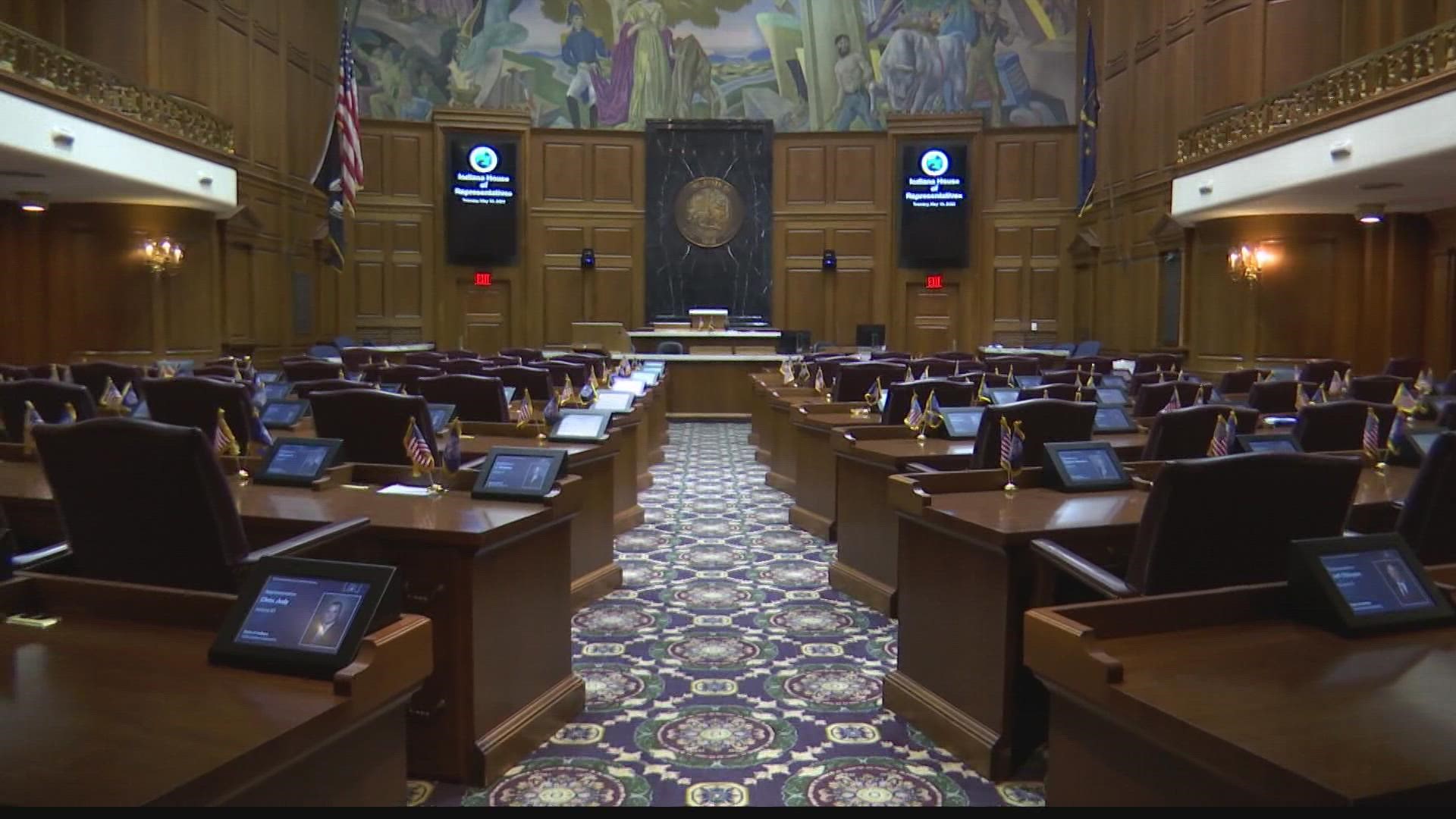INDIANAPOLIS — For the last five decades, the legal precedence of the U.S. Supreme Court reiterated that states could not ban a woman’s constitutional right to have an abortion before the point it could survive outside the womb.
In abortion cases preceding Roe v. Wade, fetal viability has often been at the core, a bright demarcation line of sorts states and courts have used to decide the legality of abortion laws. The term came up recently in the Supreme Court’s leaked draft opinion, where they seemed poised to overturn Roe v. Wade.
Here’s a breakdown of why fetal viability is so often a point of contention in abortion decisions, and what a move away from the viability standard established in cases like Roe v. Wade or Casey v. Planned Parenthood could mean.
What is fetal viability?
Fetal viability is the point at which a fetus can survive outside a woman’s body on its own.
When Roe v. Wade was passed in 1973, that typically meant around 28 weeks. As technology advanced, and could assist life outside the womb through new tools and techniques, most experts agree the point of viability has moved to somewhere around 23 and 24 weeks.
However, there is no broad consensus on when exactly fetal viability is. Riley Children’s Hospital said on their website they are capable of sustaining life at 22 weeks with the right technology.
“In the practice of medicine, the question of viability is not about ethics, but about medical care and medical decision. The question of whether a prematurely born infant is viable comes down to lots of factors and can’t be predicted easily,” said Dr. Peter Schwartz, director of the IU Center for Bioethics and Associate Professor of Medicine at IU School of Medicine.
The Supreme Court's recently-leaked draft was an opinion on the Dobbs vs. Jackson Women's Health Organization case, which largely centered around fetal viability.
Why was fetal viability central to Mississippi's Dobbs vs. Jackson Women's Health Organization case?
In 2018, Mississippi moved to pass The Gestational Age Act, or HB 1510, into law. It banned all abortions in the state after 15 weeks since the first day of a person’s last menstrual period. The act made exceptions in medical emergencies and in cases of severe fetal abnormality. It did not include exceptions for pregnancies resulting from rape or incest.
That 15-week ban, advocated for by Mississippi’s Republican-led legislature, is about two months earlier than Roe v. Wade, and subsequent court decisions permit.
The Jackson Women’s Health Organization, the only abortion provider in the state, moved to challenge HB 1510 in federal court the same day Mississippi's governor moved to sign it into law.
The U.S. District Court for the Southern District of Mississippi and the 5th Circuit Court of Appeals both struck down that law as unconstitutional, stating the Supreme Court had established and affirmed “in an unbroken line” a woman’s right to choose an abortion before viability.
In short, their decision violated federal fetal viability standards.
“States may regulate abortion procedures prior to viability, so long as they do not impose an undue burden on the woman’s right, but they may not ban abortions. The law at issue is a ban. Thus, we affirm the district court’s invalidation of the law, as well as its discovery rulings and its award of permanent injunctive relief,” the 5th Circuit Court of Appeals wrote in their decision.
Mississippi then appealed to the Supreme Court, who accepted the case for review.


In the recently-leaked draft opinion, Justice Alito casted doubt on fetal viability’s validity as a legal standard, writing: “Although the Court acknowledged that States had a legitimate interest in protecting ‘potential life,’ it found that this interest could not justify any restriction on pre-viability abortions The Court did not explain the basis for this line.”
The Dobbs v. Jackson Women’s Health Organization case would mark the first time the Supreme Court ruled on the constitutionality of pre-viability abortion ban. However, the court's drafted opinion is not final.
How did Roe v. Wade define fetal viability?
In the deciding opinion for Roe v. Wade, Justice Harry Blackmun defined viability as the point where a fetus “has the capability of meaningful life outside the mother’s womb.”
“With respect to the State’s important and legitimate interest in potential life, the ‘compelling’ point is at viability,” he wrote.
Roe v. Wade also implemented a trimester framework.
In the first trimester of pregnancy, states could not regulate the abortion decision, only the pregnant woman and her attending physician can make that decision.
However, states could impose regulations on abortion that are “reasonably related to maternal health" by the second trimester.
By the third trimester, the Supreme Court ruled that states could regulate abortions, or prohibit them entirely, so long as those law contained exceptions for cases when abortion was necessary to save the life of the mother.


"The idea was that the state's interest is highest as the fetus approaches, and passes viability. Where the women's interest in pursuing an abortion is strongest, the farther away from the point of viability the pregnancy is," said Dr. Jody Lyneé Madeira, who is a professor of law and Louis F. Niezer faculty fellow at the Indiana University Maurer School of Law.
But that framework changed with 1992’s Casey vs. Planned Parenthood, when the Supreme Court established, among other things, that restrictions on abortion are unconstitutional if they place an “undue burden” on women seeking abortions before the fetus is viable.
The Supreme Court established that restrictions on abortion are unconstitutional if they place an “undue burden” on a woman seeking an abortion before the fetus is viable.
While the Supreme Court upheld a woman's constitutional right to an abortion up to the point of viability, as granted by Roe v. Wade, it made amendments to the trimester framework. That opened the door for states to create their own viability standards. Some states that would move to ban abortion altogether are essentially tossing out any viability standard.
Those standards were upheld and reaffirmed for the last several decades, but the draft opinion suggests the current Supreme Court is poised to overrule it.
The current Supreme Court did not indicate whether new standards of viability would be implemented in abortions.

